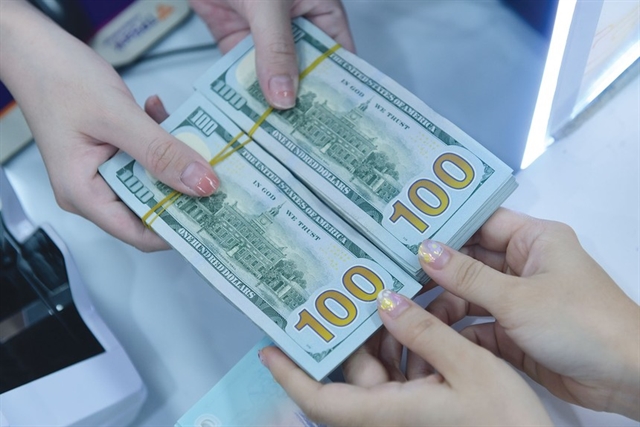Vietnam, as a rising economy in Southeast Asia, is becoming an increasingly attractive destination for international businesses. For companies aiming to cut logistics expenses, understanding the cost differences between Vietnam and China is crucial. This article will compare logistics costs across various sectors between the two countries, highlighting how Vietnam offers cost advantages in certain areas to help companies make more informed investment decisions.
Comparison of Transportation Costs
1. Road Transport
Vietnam shows a notable advantage in road transport costs in certain areas. According to the Vietnam Ministry of Transport, the average cost of road transport in Vietnam is about $0.12 per ton-kilometer, whereas in China, it is closer to $0.15 per ton-kilometer. Vietnam’s cost advantage stems primarily from the following factors:
Labor Costs: Labor costs in Vietnam are significantly lower than in China. According to the General Statistics Office of Vietnam, the average monthly wage in Vietnam is around $250, compared to nearly $1,000 in China. This disparity directly impacts labor costs in the transportation sector, making road transport more affordable in Vietnam.
Fuel Prices: Fuel prices in Vietnam are relatively low, contributing to lower road transport costs. In 2023, data from Petrolimex (Vietnam National Petroleum Group) indicated that the price of diesel in Vietnam was about $0.85 per liter, compared to $1.15 per liter in China. This means that fuel expenses represent a smaller portion of transport costs in Vietnam.
Tolls and Taxes: Vietnam has relatively low road tolls. According to the Vietnam Ministry of Transport, the average toll on Vietnamese highways is $0.05 per kilometer, while in China, it is $0.07 per kilometer. This enables companies to save more on road transportation in Vietnam.
2. Railway Transport
Vietnam also shows a cost advantage in railway transport, particularly for short-distance routes. Although Vietnam’s railway network is not as developed as China’s, transportation costs on certain routes are lower. Data from Vietnam Railways indicates that the average railway transport cost in Vietnam is $0.08 per ton-kilometer, compared to $0.10 per ton-kilometer in China.
Operating Costs: Vietnam’s railway operating costs are lower, mainly due to reduced labor and maintenance expenses. The average wage for railway workers in Vietnam is lower than that of their Chinese counterparts, and the Vietnamese government provides substantial subsidies for railway infrastructure, making rail transport a cost-effective option in Vietnam.
3. Sea Freight Costs
In terms of sea freight, Vietnam’s port fees are generally lower, especially in major ports like Ho Chi Minh City and Haiphong. According to the Vietnam Maritime Administration, the average handling fee at major Vietnamese ports is $60-70 per TEU (20-foot equivalent unit), whereas, in China, the average fee is around $50-80. While Chinese ports may offer higher efficiency, the lower fees at Vietnamese ports provide a cost advantage, particularly for certain cargo types and bulk shipments.
Port Rates and Tax Incentives: To attract more international shipping companies, the Vietnamese government has introduced various incentives in port fees and taxes. The Ministry of Finance of Vietnam reports that port taxes in Vietnam are typically 20%-30% lower than in China, which helps reduce shipping costs for businesses.
4. Air Freight Costs
Vietnam also has some advantages when it comes to air freight costs. Vietnam Airlines reports that the average air freight cost in Vietnam is about $5.5 per kilogram, compared to nearly $6.5 per kilogram in China. This difference is mainly due to the following factors:
Airport Fees: Airport fees in Vietnam are generally lower. For example, the cargo service and landing fees at Ho Chi Minh City’s Tan Son Nhat International Airport and Hanoi’s Noi Bai International Airport are typically lower than those at major Chinese airports. According to the International Air Transport Association (IATA), airport service fees in Vietnam are about 15%-20% lower than in China.
Market Competition: Although Vietnam’s air logistics market is not as mature as China’s, its competitiveness is steadily increasing. New market entrants and supportive government policies promoting air freight development have further driven down air freight costs.
Warehousing and Distribution Cost Comparison
Vietnam also offers advantages in warehousing and distribution costs. According to the General Statistics Office of Vietnam, the average warehouse rental cost in Vietnam is $3-5 per square meter per month, whereas, in China’s major cities, it typically ranges from $10-15 per square meter per month. This makes Vietnam a more cost-effective choice for warehousing, particularly for businesses that require large storage spaces.
Labor and Management Costs: Labor costs in Vietnam’s warehousing sector are lower, contributing to more competitive overall warehousing operation costs. Additionally, to encourage foreign investment in warehousing and logistics facilities, the Vietnamese government offers various tax breaks and subsidy policies, further reducing operating costs for businesses.
Import and Export Tariffs and Tax Comparison
Vietnam and China differ significantly in their import and export tariff and tax policies, impacting the overall cost structure for businesses. According to the Ministry of Finance of Vietnam, the average tariff rate in Vietnam is 10%, while China’s average tariff rate is around 13%. For certain specific goods, Vietnam’s rate is even lower, reducing costs for exporting businesses.
Preferential Trade Agreements: Vietnam has signed free trade agreements (FTAs) with several countries, such as the EU-Vietnam Free Trade Agreement (EVFTA) and the Comprehensive and Progressive Agreement for Trans-Pacific Partnership (CPTPP). These agreements lower tariff barriers between Vietnam and signatory countries, further reducing export costs.
Tax Incentive Policies: To attract foreign investment, the Vietnamese government offers several tax incentives, including corporate income tax reductions for specific sectors (such as high-tech, agriculture, and environmental protection). These policies reduce the tax burden for companies operating in Vietnam.
Administrative Procedures and Compliance Costs
Vietnam has a distinct cost advantage in administrative procedures and compliance. According to the Ministry of Planning and Investment of Vietnam, the time and cost of establishing a foreign company are lower in Vietnam than in China. Vietnam’s business registration and licensing processes are more streamlined, and the government’s “single-window” service reduces the administrative burden on companies.
Registration and Licensing Fees: The business registration fees in Vietnam typically range from $500-800, whereas, in China, these fees can reach $1,000-2,000, depending on the industry and region. Additionally, Vietnam provides one-stop services, significantly cutting down the coordination costs across different government departments.
Regulatory Transparency: Vietnam’s regulations are relatively straightforward, and the government continuously pushes administrative reforms and simplifies approval processes. These efforts reduce the time and costs businesses spend on compliance, making Vietnam a more attractive investment destination.
Technology and Innovation Costs
The gap between Vietnam and China in logistics information system investments is gradually narrowing. Although China’s logistics information systems are more advanced, Vietnam has been increasing its investment in logistics information technology. According to the Ministry of Industry and Trade of Vietnam, the average annual investment by Vietnamese companies in logistics information systems is about $50,000, compared to $100,000 for Chinese companies.
Logistics Information System Costs: The costs of IT services and software development in Vietnam are lower than in China. The average monthly salary for IT engineers and developers in Vietnam is only about $800, compared to over $2,000 for their Chinese counterparts. This allows Vietnamese companies to develop and maintain logistics information systems more affordably.
Automation Equipment Costs: The cost of purchasing automation equipment in Vietnam is about $100,000-150,000 per unit, whereas in China, it ranges between $200,000-300,000 per unit. This is because there is a higher demand for low-cost equipment in the Vietnamese market, and manufacturers often offer more budget-friendly options.
Conclusion
Overall, Vietnam demonstrates clear cost advantages in various logistics areas, especially in labor costs, fuel prices, port fees, and warehouse rentals. While China has strengths in logistics efficiency and infrastructure, Vietnam is undeniably a highly attractive option for companies looking to optimize their cost structures. Companies should consider both countries’ logistics costs and efficiencies according to their business needs and characteristics to select the market that best aligns with their strategic objectives.







